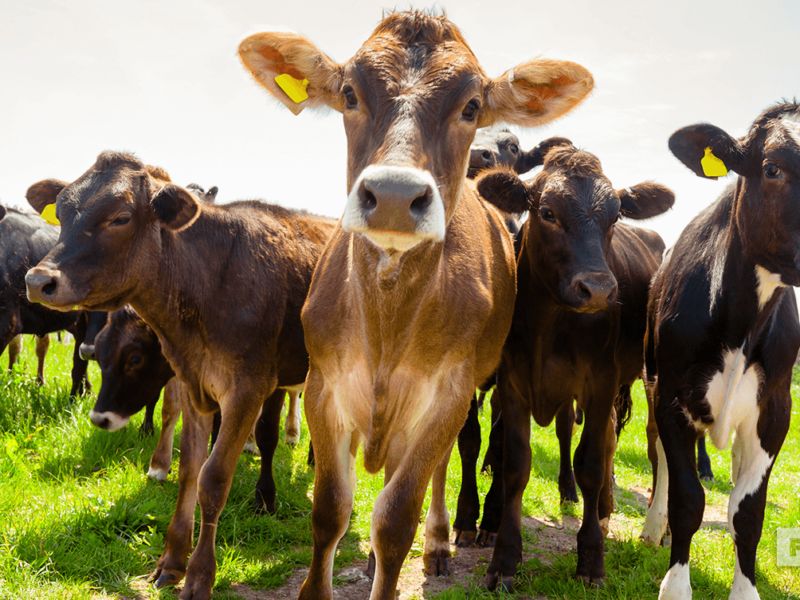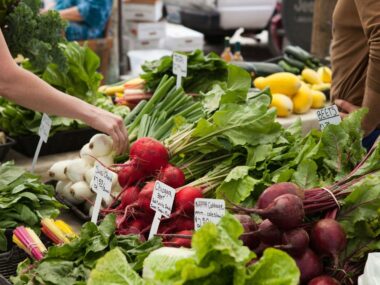Breeds of cattle encompass a diverse array of characteristics, each tailored to specific
environments, purposes, and management practices. From iconic beef breeds known for their marbling and meat quality to dairy breeds prized for their milk production, the world of cattle breeds is rich and varied. Here’s a comprehensive exploration of some prominent breeds.

Angus: Originating in Scotland, Angus cattle are renowned for their exceptional marbling and tender, flavorful beef. They are typically black in color but can also be red. Angus cattle thrive in various climates and are favored by ranchers for their efficiency in converting feed to meat.
Hereford: Hailing from Herefordshire, England, Hereford cattle are recognized by their distinctive red body color with a white face, belly, and stockings. They are known for their docile temperament, adaptability to different climates, and excellent maternal traits, making them popular among ranchers for both beef and crossbreeding purposes.
Holstein: Holstein cattle are the most prevalent dairy breed worldwide, prized for their high milk production and efficiency. Originating in the Netherlands, Holsteins are easily recognizable by their black-and-white or red-and-white coloration. They excel in dairy operations, producing large quantities of milk with high butterfat and protein content.
Jersey: Jersey cattle, originating from the Channel Island of Jersey, are renowned for their rich and creamy milk, ideal for cheese and butter production. They are typically light brown in color with a white face and small stature. Jersey cows are known for their gentle disposition and efficient feed conversion, making them popular in smaller-scale dairy operations.
Charolais: Originating in France, Charolais cattle are prized for their rapid growth, muscular build, and superior carcass quality. They are typically white or creamy white in color and are known for their heavy muscling and excellent feed efficiency. Charolais cattle are popular in crossbreeding programs aimed at improving beef production traits.
Limousin: Hailing from the Limousin region of France, Limousin cattle are renowned for their lean muscularity, efficient feed conversion, and high carcass yields. They are typically golden-red or yellow in color and are valued for their meat quality, particularly their tenderness and leanness. Limousin genetics are often utilized to enhance beef production in crossbreeding programs.
Simmental: Originating in Switzerland, Simmental cattle are prized for their dual-purpose capabilities, excelling in both milk and meat production. They are known for their striking appearance, characterized by a golden-red to light brown coat with white markings. Simmental cattle are valued for their excellent maternal traits, growth rates, and carcass quality.
Brahman: Brahman cattle, originating from India, are renowned for their adaptability to hot and humid climates, disease resistance, and heat tolerance. They are characterized by a distinctive hump over the shoulders, loose skin, and large drooping ears. Brahman cattle are popular in tropical regions for beef production and crossbreeding to enhance heat tolerance and insect resistance.
Texas Longhorn: Texas Longhorn cattle are an iconic American breed known for their distinctive long horns and hardiness. They are descendants of Spanish cattle brought to the Americas in the 16th century and played a significant role in the history of the American West. Texas Longhorns are valued for their adaptability to harsh environments and their ability to thrive on sparse forage.
Scottish Highland: Scottish Highland cattle are known for their shaggy coats, long horns, and gentle temperament. Originating in the Scottish Highlands, they are well adapted to rugged terrain and harsh weather conditions. Scottish Highland cattle are prized for their lean, flavorful beef and are often raised in extensive grazing systems.
These are just a few examples of the diverse array of cattle breeds found worldwide, each with its own unique characteristics and attributes. Whether raised for beef, milk, or as dual-purpose animals, cattle breeds play a vital role in agricultural systems across the globe, providing sustenance, livelihoods, and cultural significance to communities.










